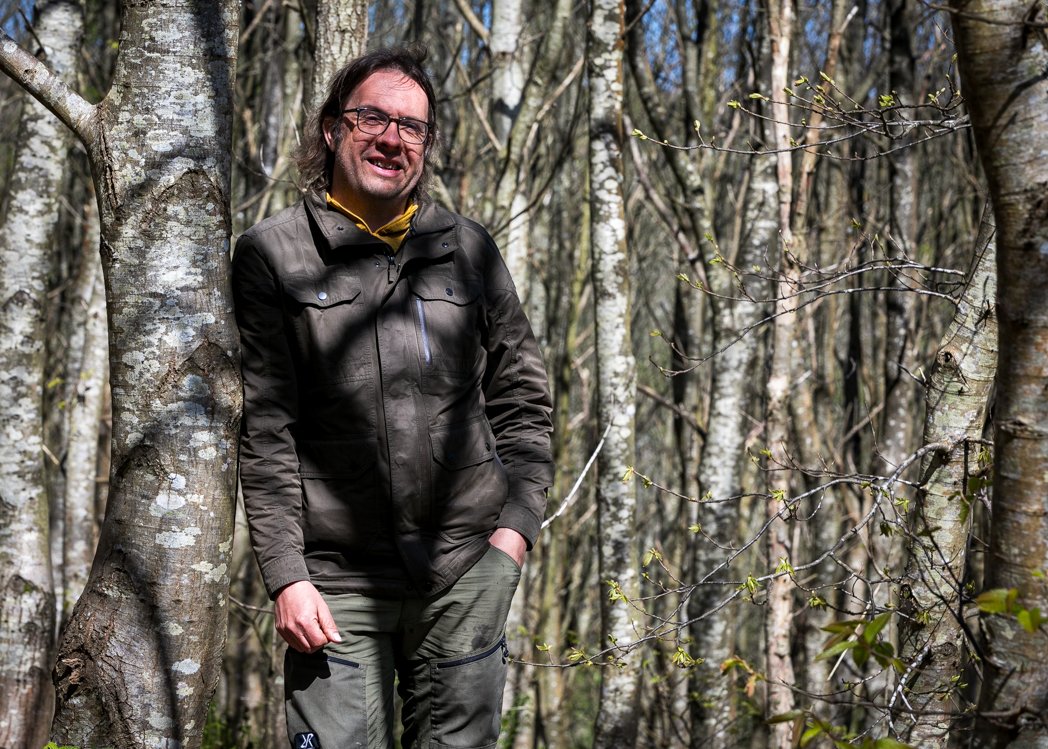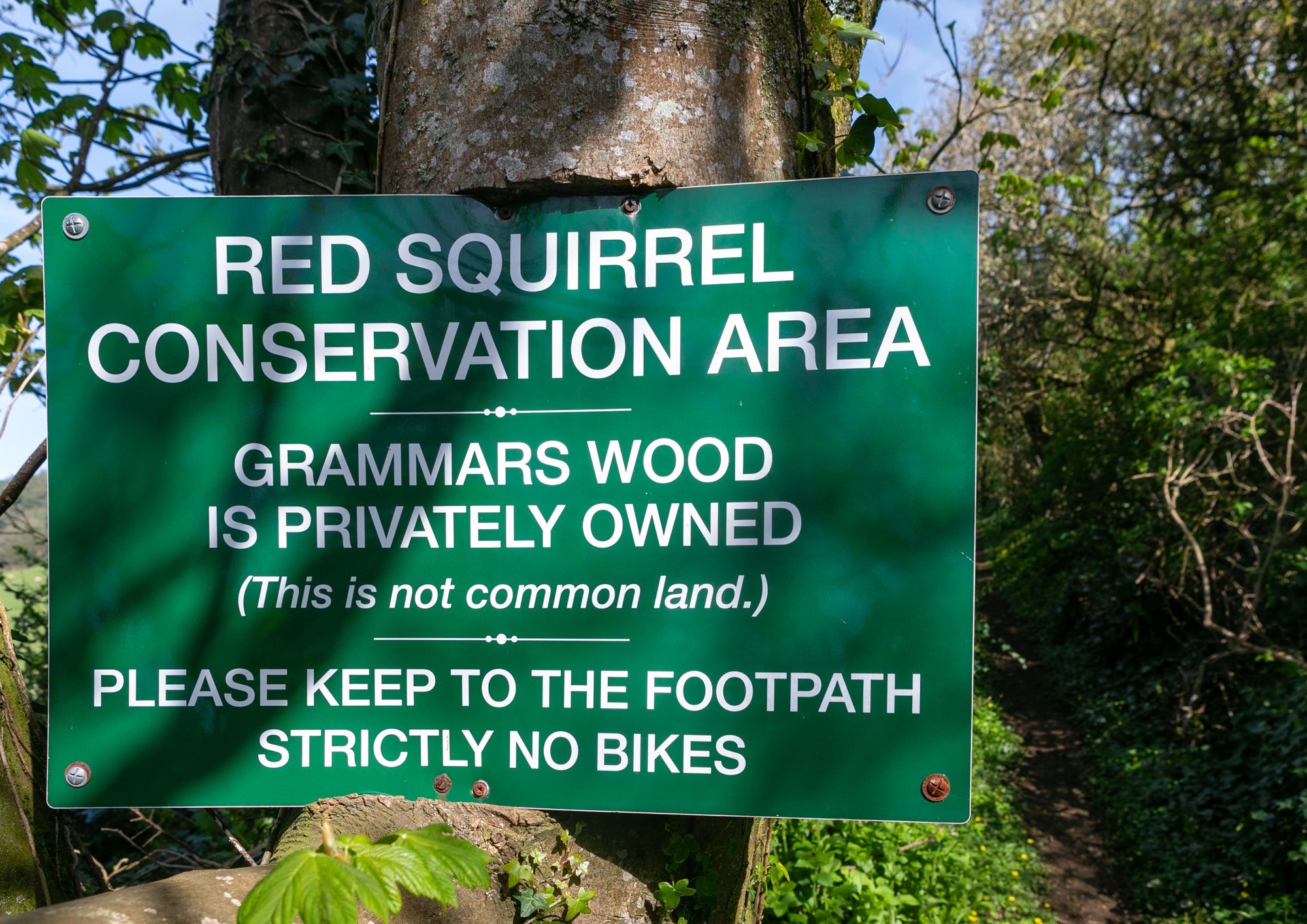West Wight People and Place: John Osborn and Grammar’s Common
The latest in the West Wight People and Place series on the Biosphere Stories blog by Pete Johnstone. What gives an area its sense of place? The answer to this question might lie in the landscape or in the distinctive buildings of the place. Community interaction may also be important, as well as a sense of wellbeing and culture or the knowledge that people may hold for their immediate surroundings.
The strength and diversity of the local economy may also feature as well as any attachment that people hold for the area, be they visitors, recent newcomers or born and bred residents who can trace their family ties back generations.
In an attempt to answer this question, Pete Johnstone set himself a challenge and that was to find the sense of place of West Wight through photographing people living and working in the area and asking them about their connection to this largely rural area.
John Osborn's father bought Grammar's Common in 2018. John is now researching the history of the place and developing a management plan.
Grammar’s Common, with its dense, almost impenetrable woodland and ancient Black Barrow is an unusual place and well worth a visit.
The 17-hectare wooded hill, northwest of Brighstone is different to the surrounding landscape. Mysterious even. The close planted Corsican pines mark it out from the grazed farmland, the downland and Brighstone Forest surrounding it.
Walking through the pine that John wants to thin out over time.
It was a pleasure to meet John Osborn, the new owner of Grammar’s Common and to walk round the hill and learn more about the area and his plans for the wood.
First though, John, from London, explained a little more about how he and the family became involved in the wood. “My Dad, Geoffrey, unbeknownst to the family, bought the lease in 2018. On Christmas morning that year, he proudly presented the Bill of Sale to us. It was news to all of us and came as a bit of a shock! To be honest, we are not quite sure why he did what he did, but he had mentioned to my mum that he had always wanted to own a woodland.
The public footpath that winds its way across Grammar's Common connects Brighstone village with the Longstone monument.
“We also know that he wanted to make good family memories. Sadly, he passed away in January 2022 and the lease passed to my mother. Dad made one visit to the wood though – and loved it and the area it’s in. He was fascinated with the Black Barrow,” John added.
“As for me, I’ve always wanted to do this kind of conservation work but never found the chance. Out of the blue my dad provided the opportunity.”
The view south to the Isle of Wight Pearl and the Tennyson Heritage Coast.
The public footpath that crosses Grammar’s Common is a well-used route. The path takes walkers between Brighstone village, the National Trust-owned downland and the ancient Longstone situated less than a mile west from the common. However, with John’s permission we walked off the public path, through the dense pine plantation and up to the Black Barrow. Grammar’s Common has seen little management and battling through the closely planted pine isn’t easy. Luckily, John is a tree surgeon by profession. “I’m still thinking about how to manage the place,” he says. “The gradual thinning out of the pine plantation is one of the many tasks that needs to be tackled over the next few years – all the trees here are suffering from a lack of light.
Not much plant life can exist under the dense canopy of the pine.
Having fought through the trees we come to the barrow, a scheduled ancient monument, protected from any disturbance without permission from Historic England.
The barrow is thought to be from the Bronze Age and one of the largest barrows on the island. It is one of very few found on the Island’s greensand.
John Osborn walking down from the Black Barrow. John wants to clear some of the vegetation so it can be more clearly seen from the downs.
“There is quite a lot of rhododendron and other vegetation, which can be damaging to the barrow, so I would like to clear it if I can get the necessary permission and funding,” says John. “It would be great to bring it back into the surrounding landscape so that people can see it from the downs.”
Well away from the barrow there is a large plantation of sweet chestnut, which John thinks may have more local use than the pine. John talks about his idea of creating a working woodland, but one that is sympathetic to the woodland being situated within the Island’s National Landscape (previously called an Area of Outstanding Natural Beauty).
The east side of the Black Barrow has a more open aspect with broadleaf trees.
On our walk back, the public footpath leads us to where John has widened the ride during the winter months and created a number of glades for butterflies. Some of the trees on the hill are fairly young, but there are some older trees that have both landscape and wildlife value and are excellent for red squirrels, beetles and other insects. He is developing a management plan that will create a more diverse landscape.
An entrance sign to Grammar's Common alongside the public footpath. The sign was put up by a previous owner.
John is pleased that local people have said good things about his work so far, including the new seat he has put in by the gate at the top of the hill. John is keen to hear from people who could help with the wildlife monitoring in the wood and is aware that the island is a Biosphere Reserve. He is also keen to hear local stories and folklore associated with Grammar’s Common. It is said that the barrow may even have some connection to king Arwald, the Island’s last king and the last pagan king of Briton.
This tree, blown over by the wind, will be left to rot down and provide a valuable habitat for insects and other wildlife.
No one knows quite where the name Grammar came from and it has changed over time and is described in a Mottistone estate map of 1815 as Jeffrey’s Common.
“I love the place for its peace and quiet, its natural beauty and the feeling that it is steeped in history,” says John. “As my dad wanted, the whole family is looking forward to making good memories here.”
The view east across a traditional farmland landscape to a recently planted vineyard.
Photography © Pete Johnstone










